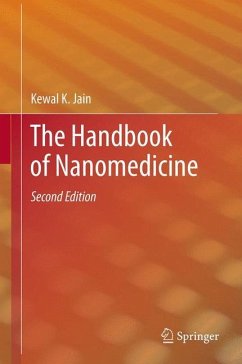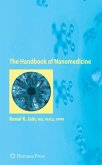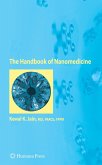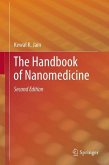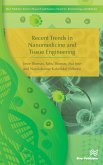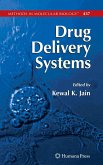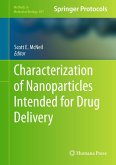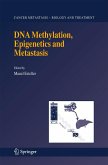Nanomedicine is defined as the application of nanobiotechnology in clinical medicine, which is currently being used to research the pathomechanism of disease, refine molecular diagnostics, and aid in the discovery, development, and delivery of drugs. In The Handbook of Nanomedicine, Second Edition, Prof. Kewal K. Jain updates, reorganizes, and replaces information in the comprehensive first edition in order to capture the most recent advances in this dynamic field. Important components of nanomedicine such as nanodiagnostics and nanopharmaceuticals, where the greatest number of advances are occurring, are covered extensively. As this text is aimed at nonmedical scientists, pharmaceutical personnel, as well as physicians, descriptions of the technology involved and other medical terminology are kept as clear and simple as possible.
In depth and cutting-edge, The Handbook of Nanomedicine, Second Edition informs its readers of the ever-growing field of nanomedicine,destined to play a significant role in the future of healthcare.
In depth and cutting-edge, The Handbook of Nanomedicine, Second Edition informs its readers of the ever-growing field of nanomedicine,destined to play a significant role in the future of healthcare.
From the reviews:
"This is a broad and in-depth introduction to the field of nanomedicine, where nanobiotechnology meets clinical medicine, providing readers with a useful and informative guide. ... Recognizing that the audience for the handbook will consist of readers from a variety of occupations, such as nonmedical scientists and pharmaceutical experts ... . The table of contents is very detailed which allows readers to quickly scan the contents of the book. ... the author has crafted a very useful and accessible guide to a very difficult subject." (Lisa Ennis, Doody's Review Service, August, 2008)
"The book consists of 18 chapters that showcase this exciting field to a much broader audience. ... Overall, the 'Handbook of Nanomedicine' is a good treaty for nonscientists and entry-level students who are interested in this area. ... the book is recommended to those who are new to the field. Instructors may consider adopting this book for a general nanotechnology-based course ... . Lastly, library patrons will find the book useful as an introductory guide to the field." (Mansoor M. Amiji, ChemMedChem, Issue 3, 2008)
"This is a broad and in-depth introduction to the field of nanomedicine, where nanobiotechnology meets clinical medicine, providing readers with a useful and informative guide. ... Recognizing that the audience for the handbook will consist of readers from a variety of occupations, such as nonmedical scientists and pharmaceutical experts ... . The table of contents is very detailed which allows readers to quickly scan the contents of the book. ... the author has crafted a very useful and accessible guide to a very difficult subject." (Lisa Ennis, Doody's Review Service, August, 2008)
"The book consists of 18 chapters that showcase this exciting field to a much broader audience. ... Overall, the 'Handbook of Nanomedicine' is a good treaty for nonscientists and entry-level students who are interested in this area. ... the book is recommended to those who are new to the field. Instructors may consider adopting this book for a general nanotechnology-based course ... . Lastly, library patrons will find the book useful as an introductory guide to the field." (Mansoor M. Amiji, ChemMedChem, Issue 3, 2008)

